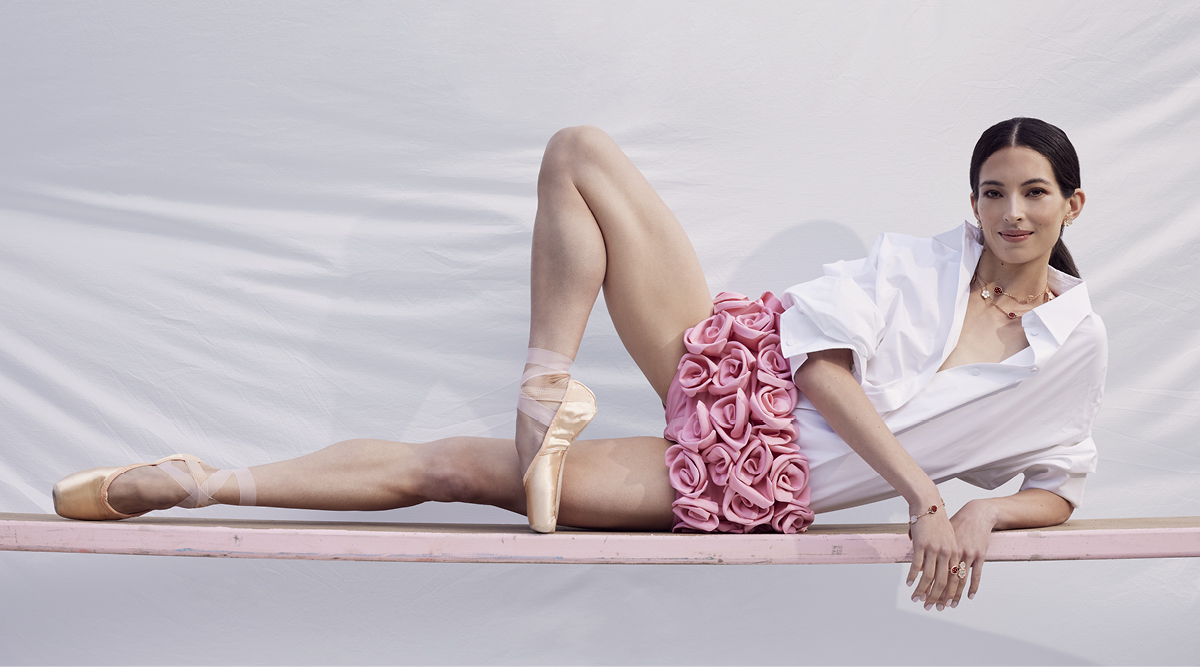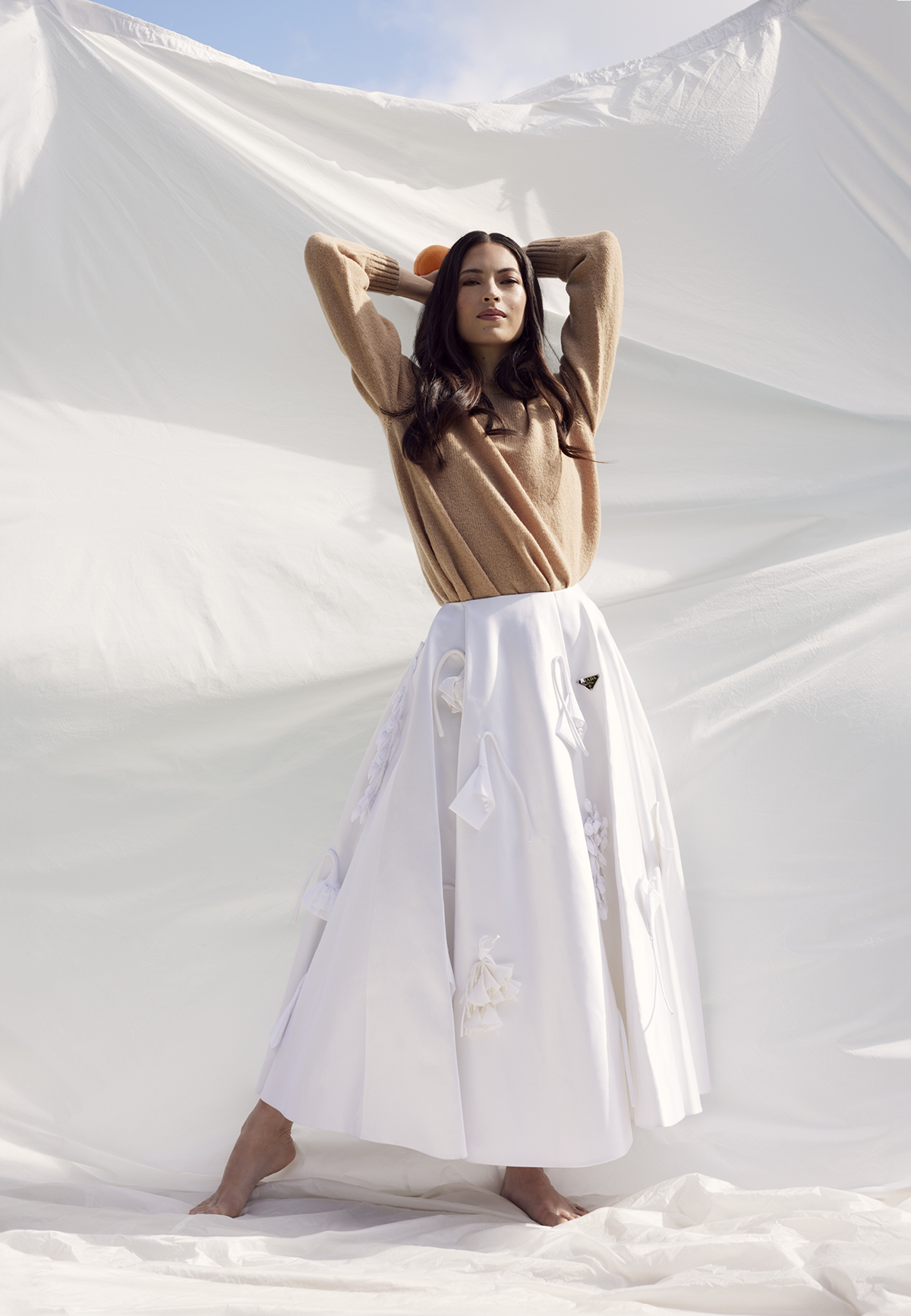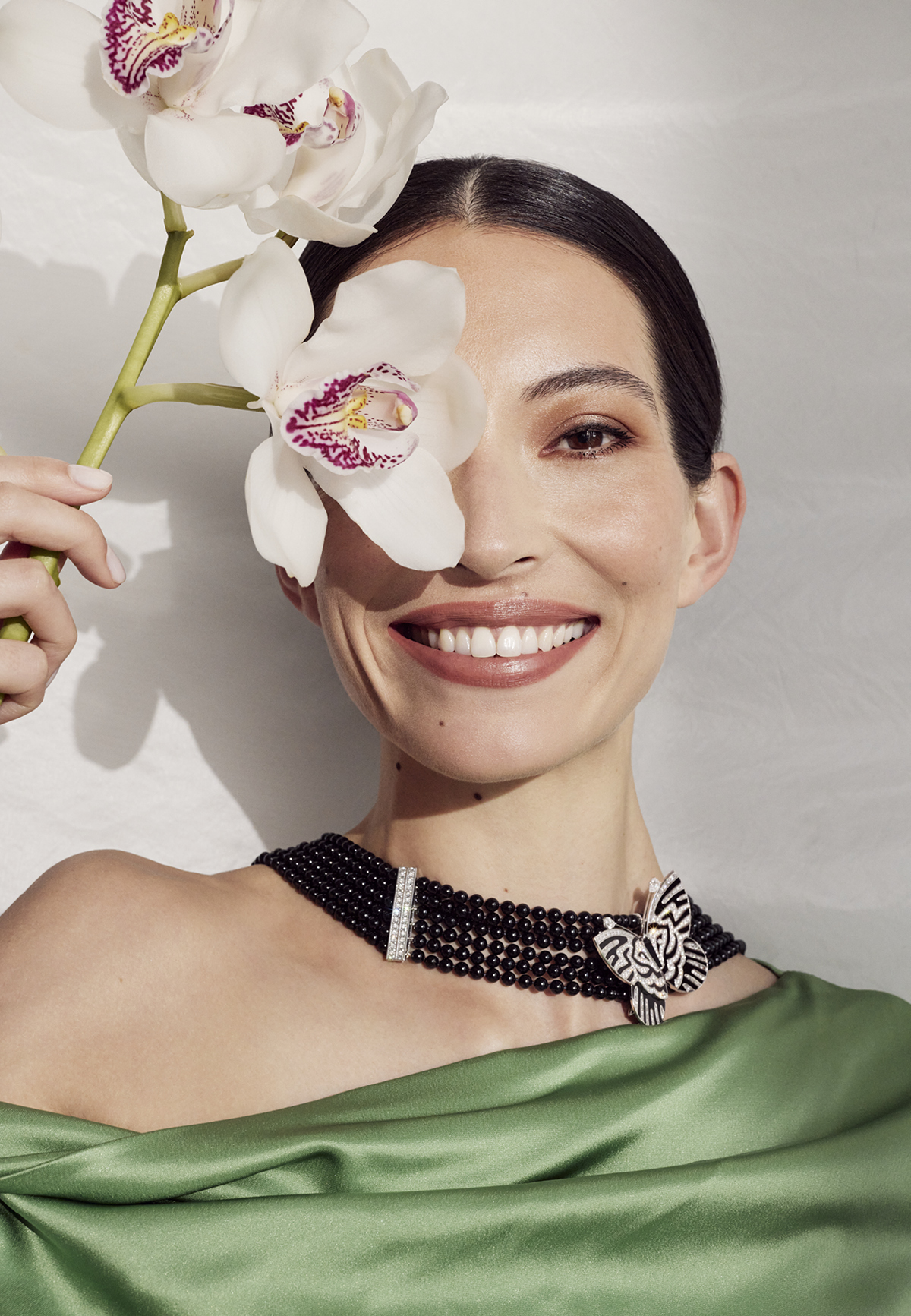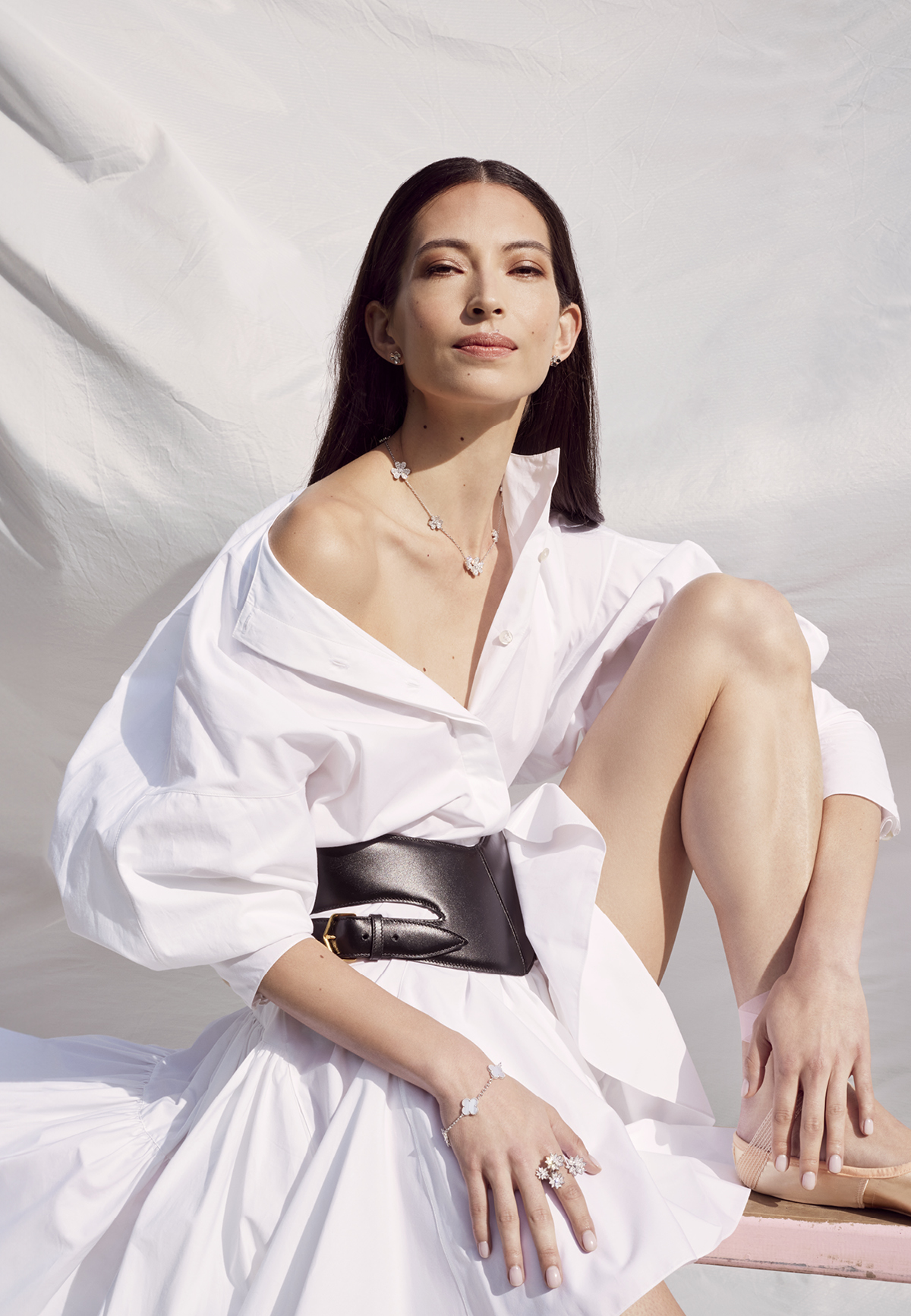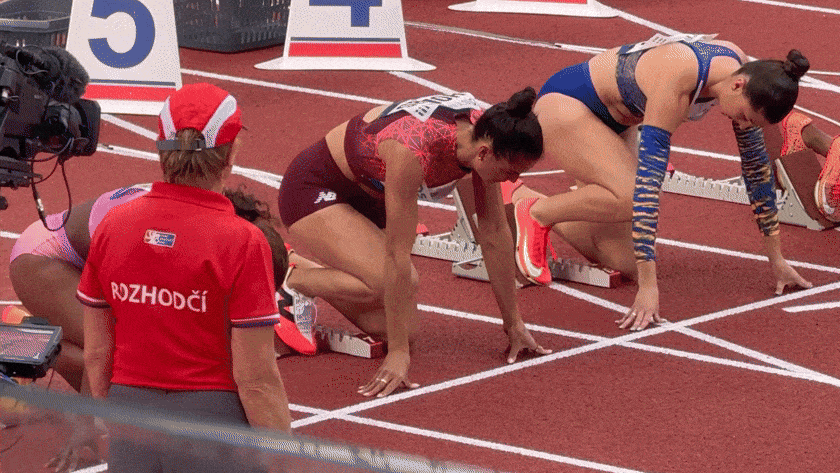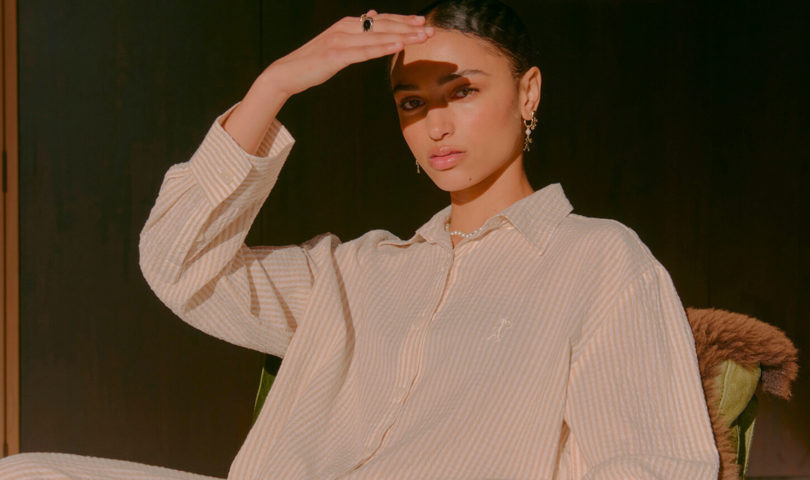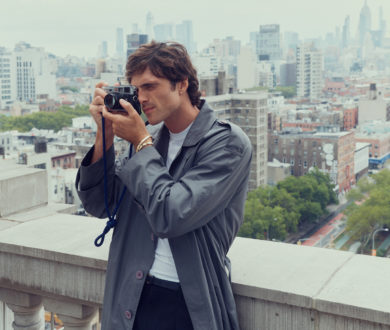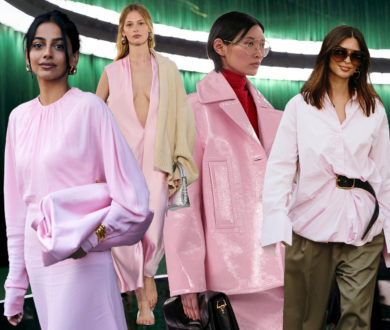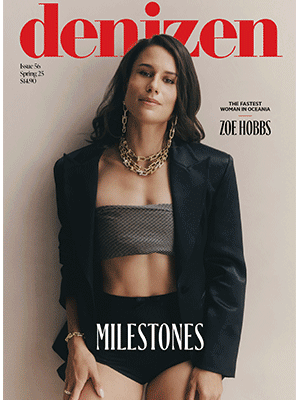While many little girls dream of becoming ballerinas when they grow up, very few actually end up making it their career. And even then, only a handful of the most proficient dancersnin the world are accepted into an international company, within which fewer still ascend to the top — reaching the pinnacle of their profession as a result. But Hannah O’Neill is one.
At just 30 years old, this Japanese-New Zealand ballet dancer has spent the last 12 years rising rapidly through the ranks of the prestigious Paris Opera Ballet, where she has held a lifetime contract since 2013, and where, earlier this year, she was promoted to ‘danseuse étoile’ — the highest rank and honour in what many consider to be the most historic and revered ballet company in the world.
It might sound like a fairy tale, and in many ways it is, but for O’Neill, her new title is the culmination of decades of dedication to her passion, of honing her craft and of working tirelessly to grow and evolve as a dancer. What she has achieved is incredible, yes, but perhaps more incredible is her discipline, her drive, the countless hours spent training, rehearsing and performing, and her ability to accept challenges with grace and to face them with grit. I sat down with O’Neill on the set of our cover shoot to talk about the time-honoured discipline to which she has dedicated her life, discovering a woman who moves through the world with the same effortless elegance as she displays on stage.
Born in Tokyo to a Japanese mother and a New Zealand, rugby-player father, Hannah O’Neill went to her first ballet class at three years old. Her family moved to New Zealand when she was eight, where, despite being a sporty all-rounder, her lessons at the Mount Eden School of Ballet slowly overtook all other extracurricular commitments, and she found herself at just 14, well on her way to becoming a professional ballerina. For most, the years of mid-teenagehood would be far too young to be making any career-defining decisions, but for O’Neill (who I suspect was often called ‘wise beyond her years’ growing up) ballet was a preordained conclusion.
“I didn’t have a moment where I decided consciously that this was what I was going to do,” she explains, “But I knew very young that I was going to be a ballerina… and it all just happened from there.” Granted, everything that ‘just happened’ to O’Neill really came to pass because of the potent mix of talent, determination, passion and intelligence that I saw in her during our interview. For anyone who thinks that ballerinas simply waltz around a stage in beautiful dresses, let me clear something up right now: professional ballerinas are, despite their outwardly elegant appearance, elite athletes. The physical demands on them and the requirements for success are the same as anyone operating at the highest level of any kind of sport. The only difference is that O’Neill and her cohort can’t show the true effort it takes to achieve the feats that we merely marvel at from the audience. They do it with flawlessly made-up faces and twinkling smiles, shimmering in sequin corsets and stiff tutus and most of the time, while balancing on the very tips of their toes.
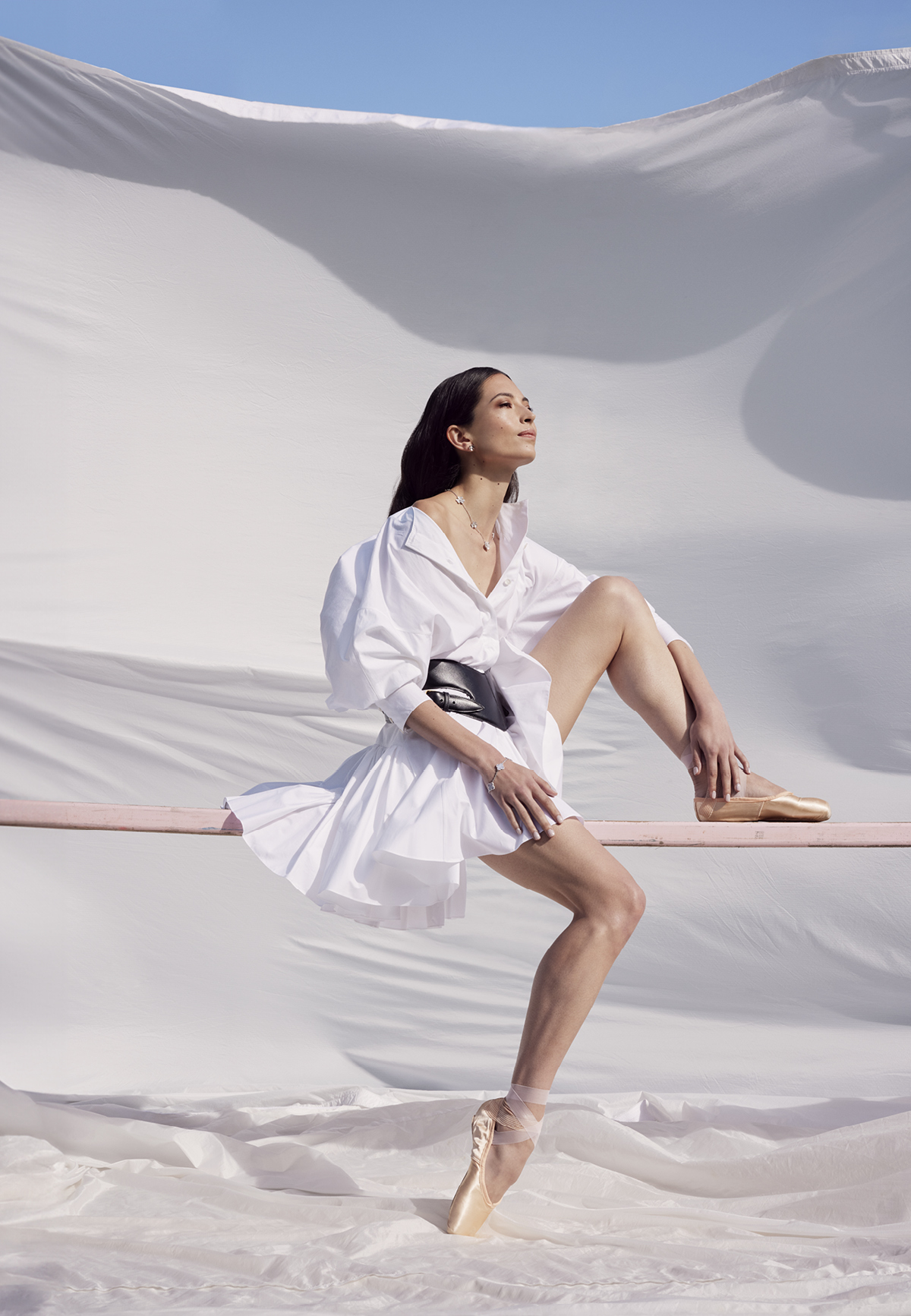
At 14, O’Neill competed in the Youth America Grand Prix in New York, from which she was offered a scholarship to the Australian Ballet School in Melbourne. At 15, she moved across the ditch to start studying under the tutelage of the school’s revered director, Marilyn Rowe. But it was in her first year, after travelling to Switzerland to compete in the prestigious Prix De Lausanne (which she won), that the young dancer first encountered the European ballet companies that, for so long, she had only admired from afar. “The Paris Opera Ballet was the ultimate dream,” she tells me, “but I didn’t know if it was possible… so when an audition came up in my last year at school, I just knew I had to try.”
For context, the Paris Opera Ballet (founded in the 1600s and dating back to Louis XIV) is the oldest national ballet company in the world. Alongside the Bolshoi Ballet in Moscow, the Mariinsky Ballet in St Petersburg and the Royal Ballet in London, it is one of the preeminent companies globally (although many consider it the most prestigious and most influential). Throughout its history, the company has benefited from directorship tenures by a number of renowned figures, including Rudolf Nureyev, whose time at the helm changed the artform for good, and ushered in what many still call the Paris Opera Ballet’s ‘golden years’.
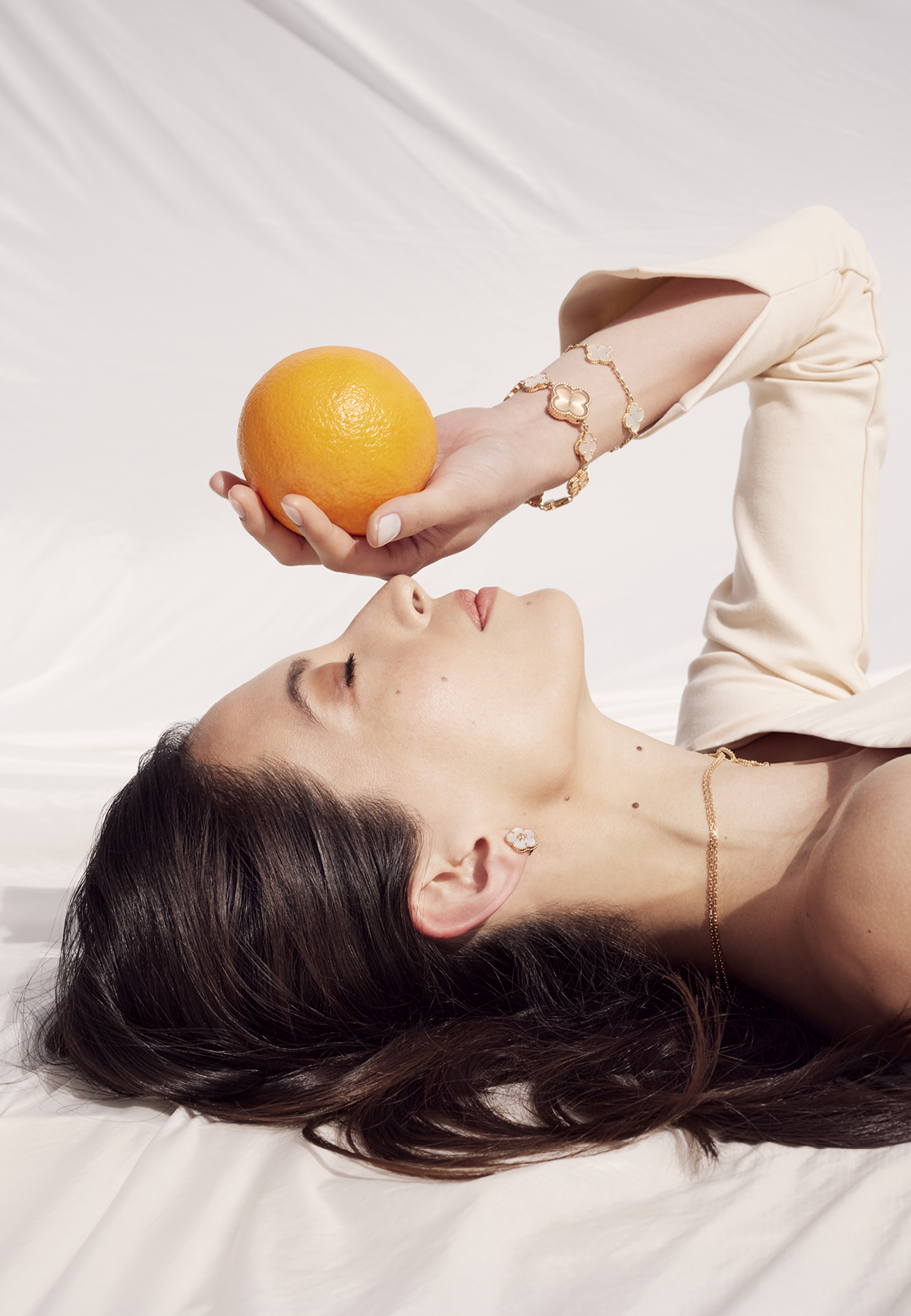
Long aspired to by dancers the world over, the Paris Opera Ballet not only has exacting standards but, until recently, has typically only accepted dancers from France and in particular, those who had first studied at the Paris Opera Ballet School. This means that any foreigner invited into the company’s hallowed ranks is marked as a dancer of exceptional skill and quality.
O’Neill’s audition for the Paris Opera Ballet was, she tells me, rigorous and fiercely competitive. But she succeeded, and at 18 years old, she was offered a seasonal contract to join the company’s corps de ballet, able to be renewed every year via an audition. Graduating a few months early from the Australian Ballet School (although not without being named the Dux of her year group), O’Neill moved to Paris to start her professional career, throwing herself wholeheartedly into the deep end, where challenging language barriers and homesickness were offset by her close proximity to the beating heart of international ballet and her ability to work alongside the iconic dancers, directors and choreographers that she had idolised as a young girl.
After two years of seasonal contracting, O’Neill was chosen as the top female performer in the Paris Opera Ballet’s annual ‘concours’, an internal competition in which the company’s dancers vie for promotion through its hierarchical system. She was offered a lifetime contract and thereafter, was promoted almost every year, finally achieving the status of ‘premiere danseuse’ in 2016 — one step below the coveted title of ‘étoile’, which is the ultimate accolade for any ballerina and a dream that O’Neill had harboured since childhood.
But sometimes, the path is not as straightforward as it seems. When there was a change in directorship at the Paris Opera Ballet, and many of O’Neill’s generation were promoted except for her, it prompted the dancer to rethink her approach, and eventually to change the way she danced altogether. She explains, “It was hard, and it was a time that I was asking myself a lot of questions, worrying about how to impress other people and concerned with everyone around me, when really, I just needed to focus on myself.”
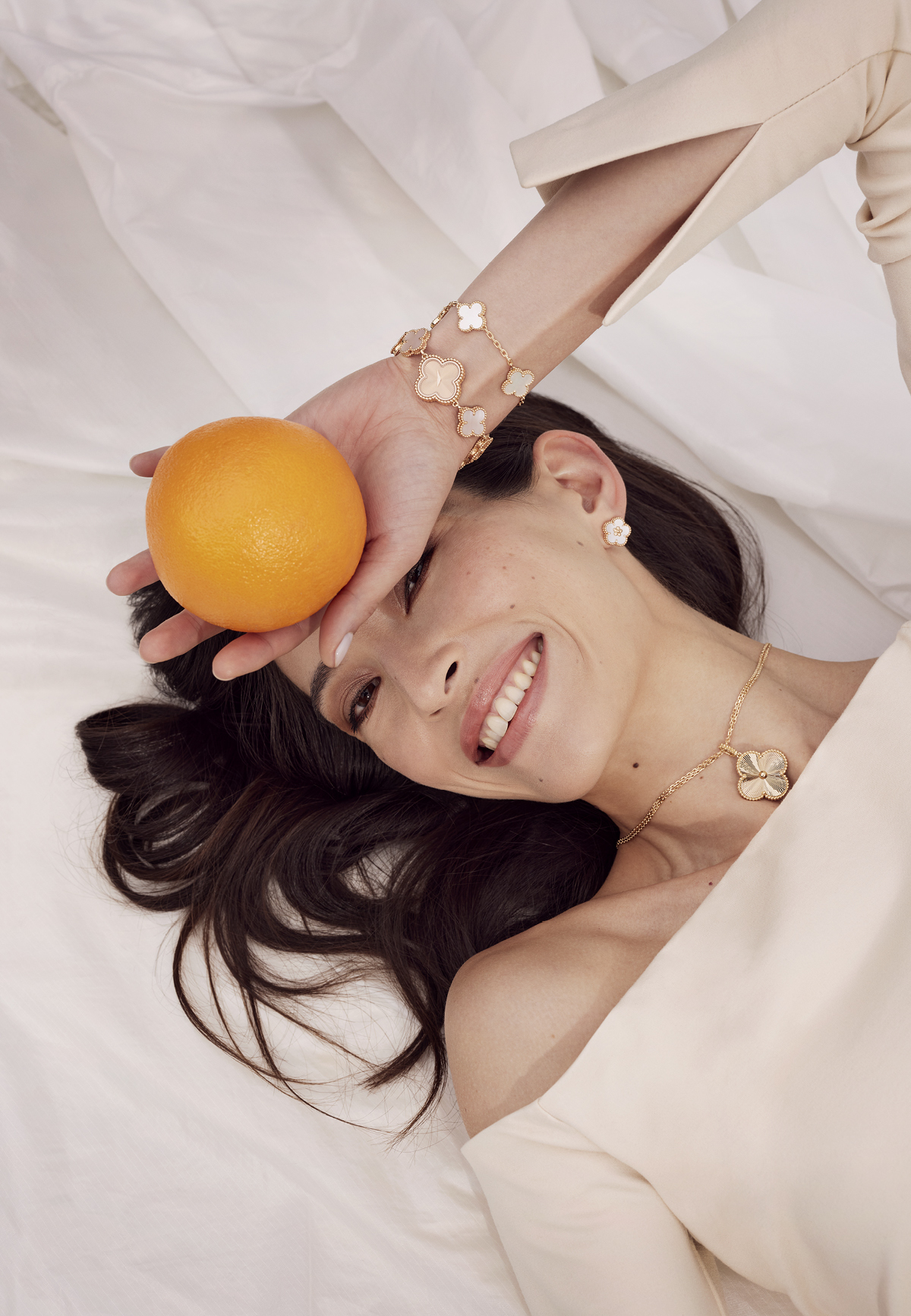
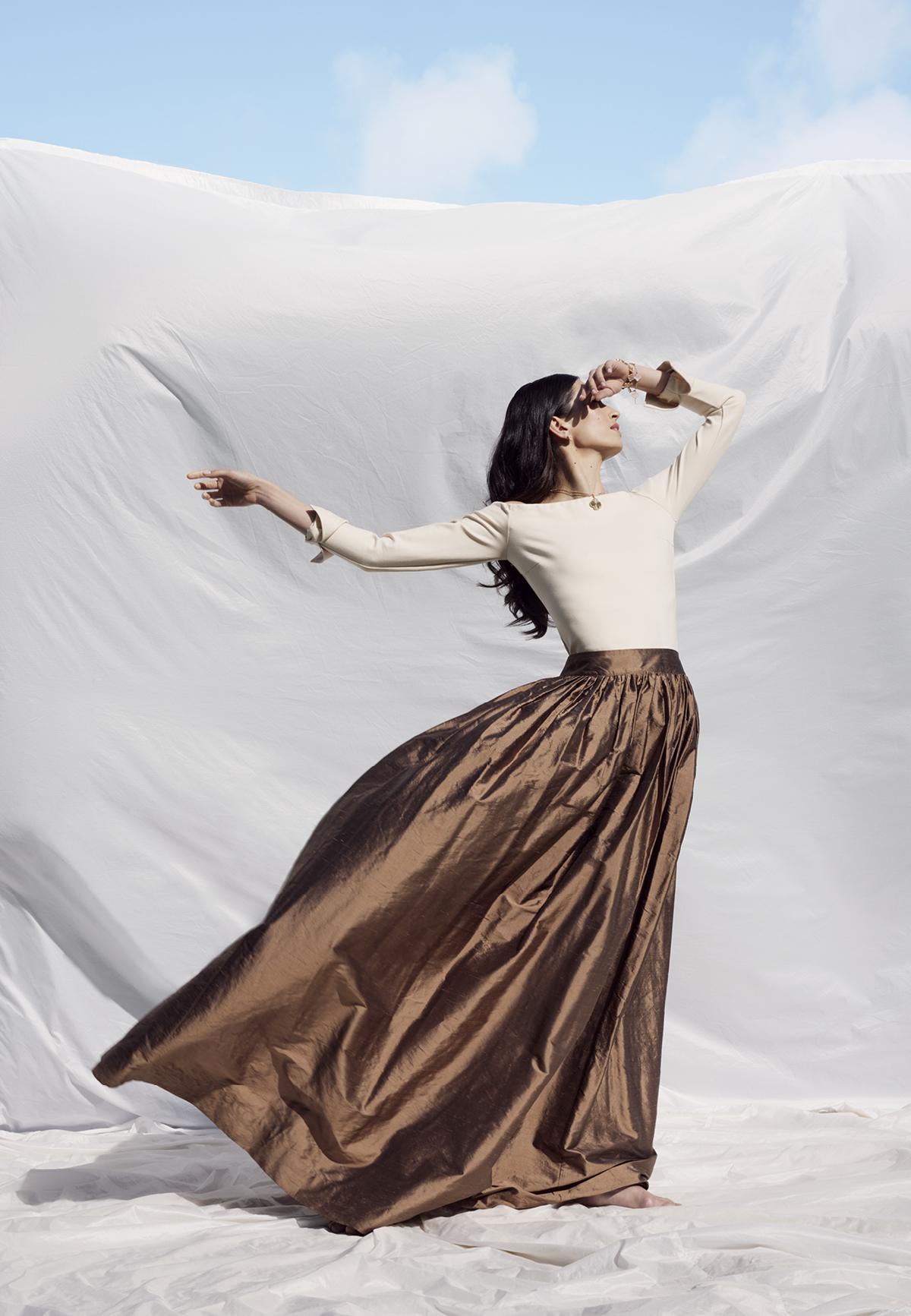
During a stint in Tokyo, O’Neill awoke one morning with an arm that was blue and swollen. She went on to dance that night in the same condition, not realising that it was actually two, very serious blood clots. So serious, in fact, that if they had reached her lungs, the result could have been fatal. “My arm was the size of my thigh and I kept dancing with it, which was very unconscious of me,” she says, shaking her head. “But because of a bone abnormality I was born with, an extra rib, the clots were stopped from doing any major damage… otherwise I could have dropped dead on stage.” Deciding to finally have the long-overdue operation to remove her extra rib, and needing six months off as a result, O’Neill credits the whole ordeal as a turning point for her, both personally and professionally.
“It was a time that I really decided to live my life for me and not for others,” she tells me, “and then, when Covid hit, I took the added time off to work really closely with my coach and basically restart everything… my technique, my style, my approach to dance… all the habits that I had formed over nearly 20 years of ballet. I worked in my own time, on weekends and late nights and did all I could to break everything down and start again… to forge my own path instead of trying to follow someone else’s.” She continues, “I have never danced the same since.”
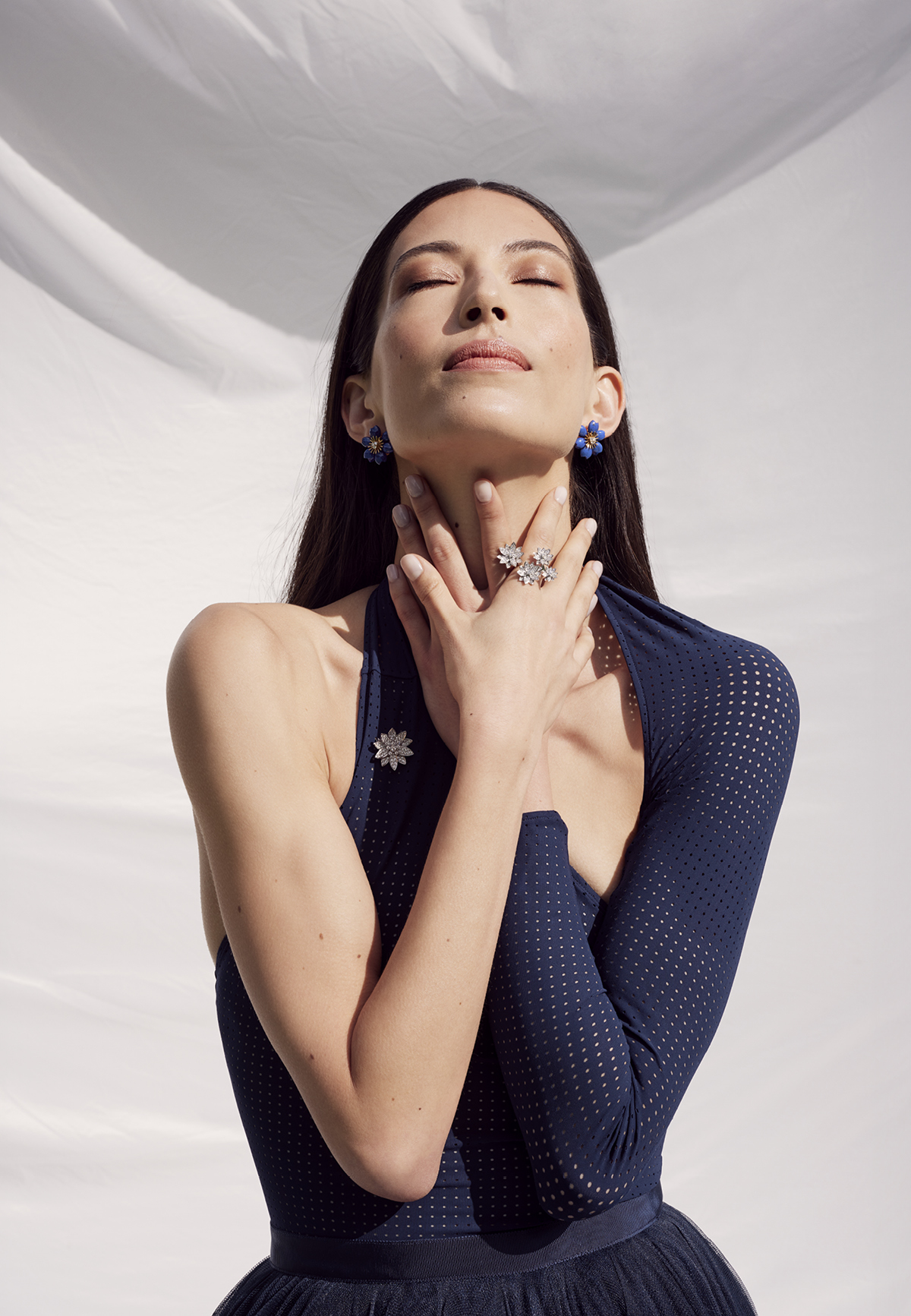
Earlier this year, O’Neill was leading the Paris Opera Ballet’s performance of George Balanchine’s Ballet Imperial, when, while taking her bow, Alexander Neef (Director General of the Paris Opera) and José Martinez (Director of Dance) emerged unexpectedly on stage to announce that she and her dance partner, Marc Moreau, would be promoted to ‘étoile’ status, the absolute pinnacle of not only the company, but really, of the artform writ large. For O’Neill, it was an unforgettable moment. Despite only being 30, it felt like the culmination of a lifetime of work, and marked the ballerina’s half-way point with the company that had already given her so much. (For anyone wondering, dancers at the Paris Opera Ballet retire at 42.) As an ‘étoile’, O’Neill is now one of the top 10 female dancers in the Paris Opera Ballet and is only one of two foreigners currently at that level. Later this year, she tells me, she will make her official debut as an étoile, dancing the titular role in Giselle.
For O’Neill, the real beauty of achieving her dream at this particular juncture in her career is that, alongside the recognition that comes with her new contract, her remaining years at the Paris Opera Ballet will see her only dancing lead or soloist roles, with more freedom than ever to choose, and more time to focus on simply doing what she loves.
Anyone who has watched O’Neill on stage will agree that her talent is undeniable. With long, elegant limbs that she employs effortlessly to glide across the stage, O’Neill’s style of dance offers a unique take on the French ballet tradition, mixed with the technical influence of Rudolf Nureyev — whose legacy left an indelible impression on the wider landscape of ballet. “My coach had worked closely with Nureyev and so had my director at the Australian Ballet School,” she explains to me, “so I love the Nureyev style, which is challenging and specific, with a focus on fast pointe work, clearly-defined postures and intense but vivid choreography.”
Recently, I watched a video of O’Neill performing as Myrtha in last year’s Giselle and was struck by the way she combined precise foot work with fluid movements, the technical difficulty of her repertoire expertly-masked by a facade of expressive lyricism and poise. “I am constantly researching how I can make the choreography my own,” she explains, “how I can make it feel original and true to myself while still honouring the role.” She continues, “working with my coach, I’m not afraid to push the boundaries and to experiment, and then choose what suits me best, both visually and emotionally.”
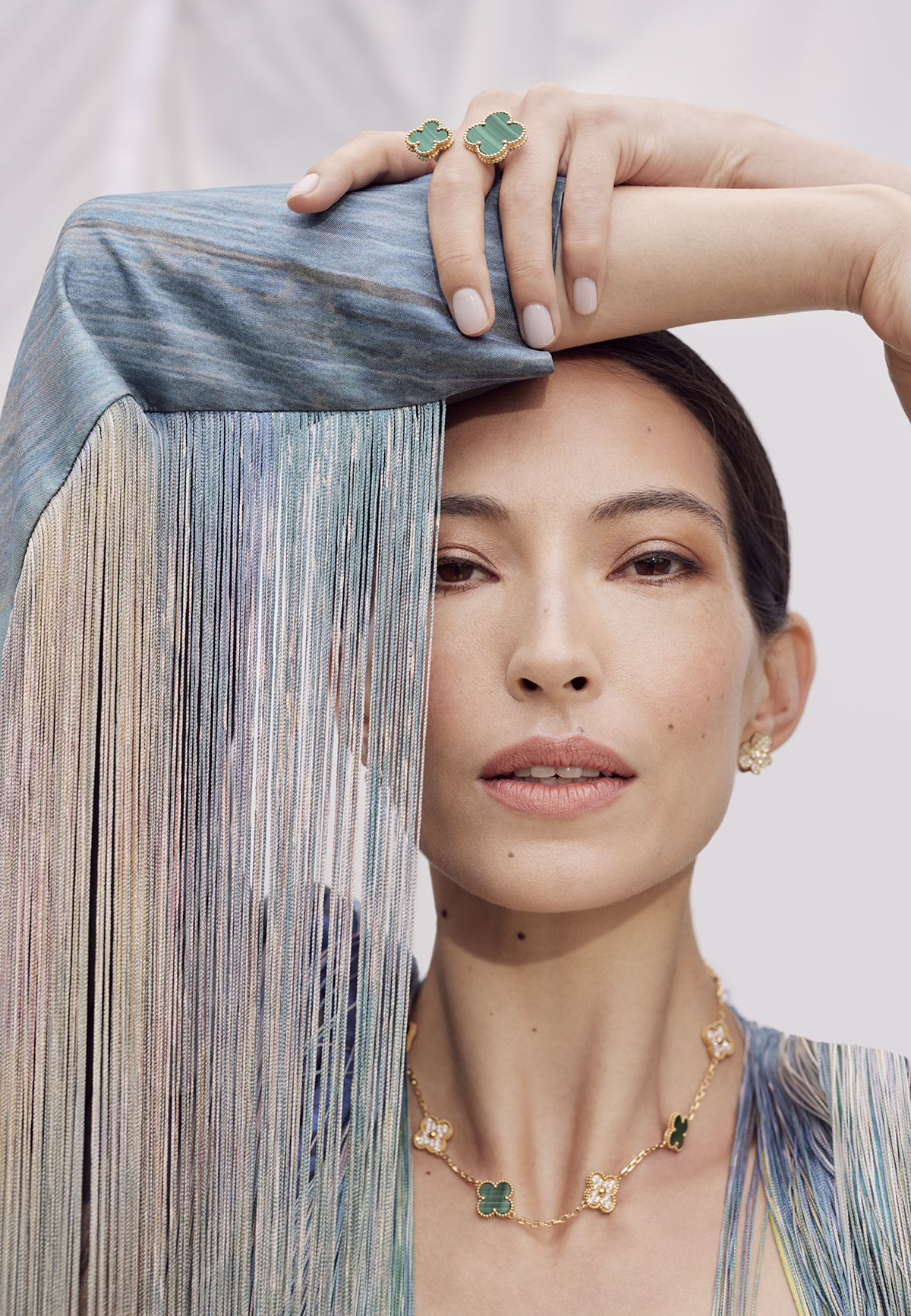
Looking through videos of O’Neill on stage, I was reminded of the many times I was taken to the ballet as a young girl, and was transported by the magical worlds being created by similarly-statuesque performers breathing life into the stories I had learned and loved as a child. After all, ballet is an artform that can both astound and move you in a single piece of two-minute choreography. It ignites the imagination, draws you in with its universally human stories and keeps you there with performances by practitioners whose athleticism is matched only by their grace, and who give everything of themselves on stage, night after night. As O’Neill articulates, “the stage is such a communicative and honest place… you can’t lie.” She continues, “the audience can see everything so you can’t do anything half-heartedly because if you do, they’ll know.”
It is on the stage that O’Neill tells me she finds freedom, the place where she is most at home. “I know that I’ve had a good show when I am free on stage and can feel a rapport with the audience,” she explains, “there’s such a special, intimate ambience, particularly when I’m performing at the Garnier… it really is like no other theatre.”
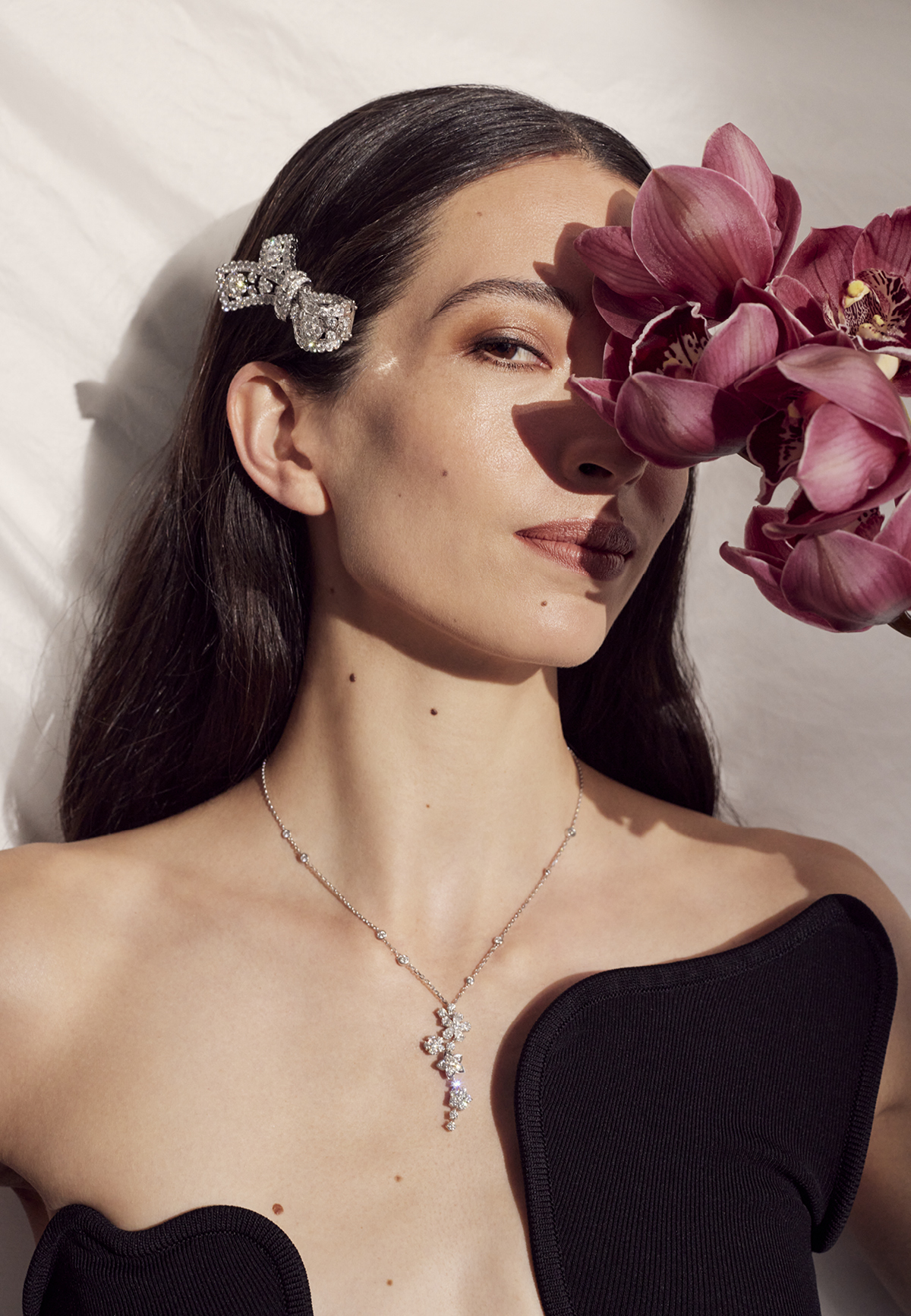
O’Neill has been based in Paris for 12 years now (longer than any other place she has lived in her life). And while on her days off, the self-proclaimed “gourmand” enjoys immersing herself in the City’s vast and varied dining scene, as well as its culturally enriching sites and beautiful gardens, on a typical day, she is training or rehearsing from around 10am until 7pm, which extends to just before midnight on performance days. After all, professional ballet is a lifestyle that demands commitment far beyond the scope of a normal job, a commitment that O’Neill emphasises she has been more than happy to make.
“It’s a very very hard profession so you have to be passionate about it,” she says. “If you can’t find joy, there’s no point in doing it.” When I ask her about what she might tell a young dancer at the start of their career, she pauses, “it’s crucial to put in the work and to have persistence and drive,” she ventures, “but also, you have to stay curious, to keep your sense of humour and to be gracious and grounded in everything that you do.”
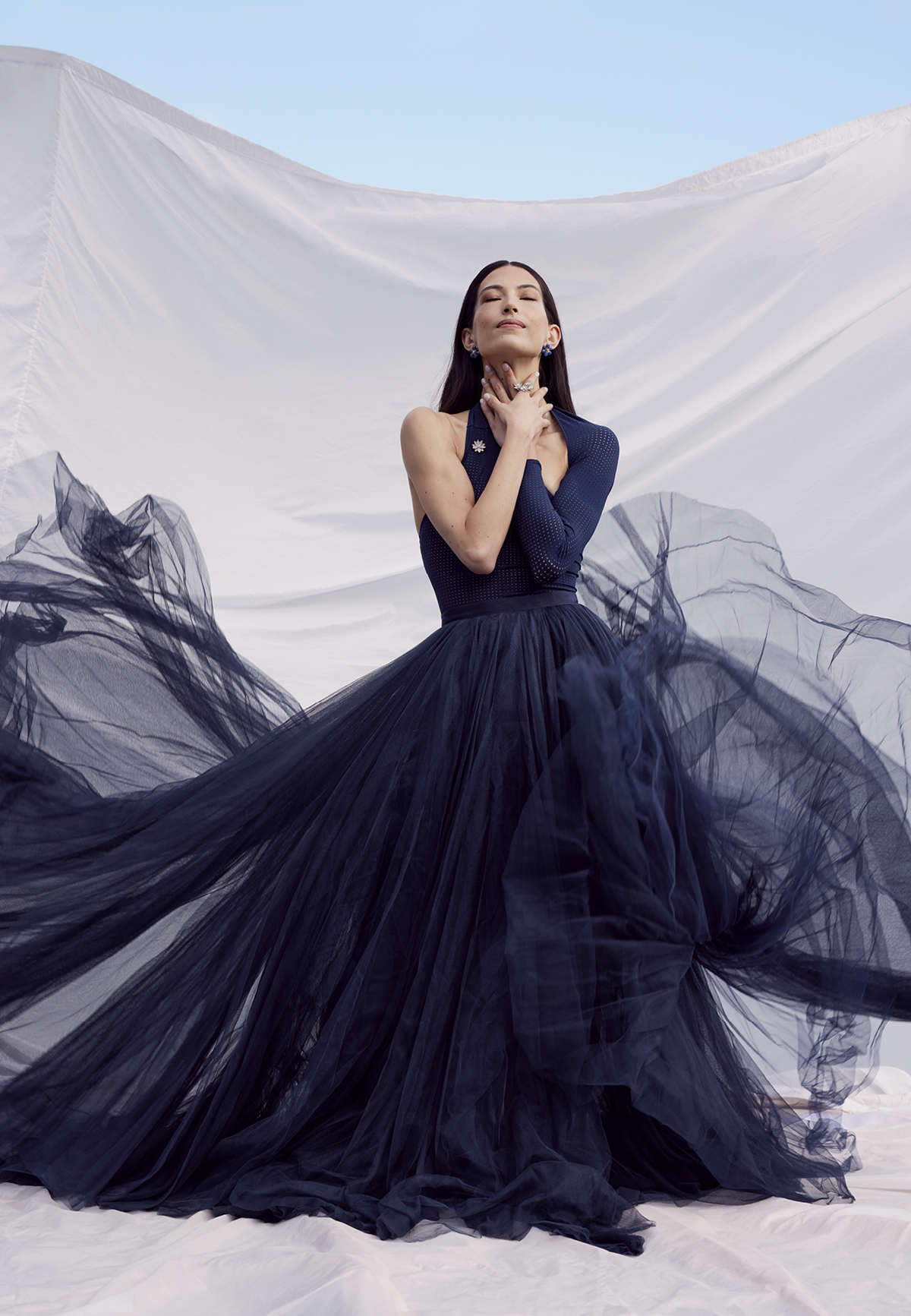
It is in this last point that I feel O’Neill really cuts to the heart of her own essence as a dancer. Achieving ‘étoile’ status is not only a measure of talent or ability, or even of dedication or work ethic. It is reserved exclusively for those who carry that intangible ‘star quality’; that indescribable ‘je ne sais quoi’ that draws the eyes of an audience to one person and anchors them there. It isn’t something that can be taught or trained or even really articulated, it is something that one must carry inherently and project almost unwittingly — an innate charisma and magnetism that has, since time immemorial, set the best apart from the rest in every artistic field. O’Neill has this in spades.
In fact, from her obvious technical brilliance to her performance quality to the distinctly Kiwi way in which she has punched far, far above her weight, Hannah O’Neill is a person we should all be watching, both on and off the stage, particularly as she embarks on what is sure to be the most storied chapter of an already-impressive career. “I just want to dance my heart out,” she tells me, towards the end of our conversation. And while I know she is talking about the future, I suspect that is exactly what she has been doing since the very beginning.
Stylist: Claire Sullivan-Kraus Photography Assistant: Josh Szeto Makeup: Kiekie Stanners Hair: Trish Bhikoo Nails: Danica Morunga

